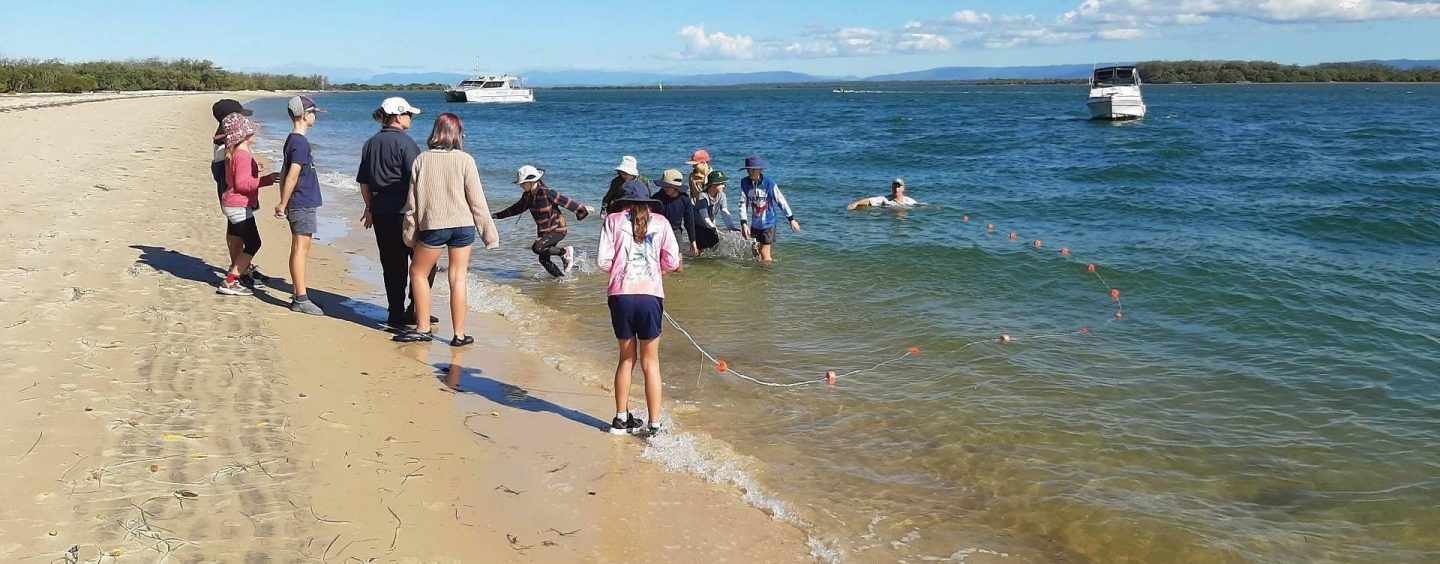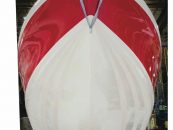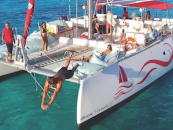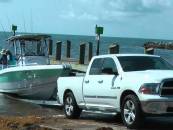Photos by Aram Kancachian & Patricia Fitzgerald
In June 2021, a group of home-educating children went on a day trip to South Stradbroke Island, as part of the Jacobs Well Environmental Education Centre (JWEEC) program. Organised by a home-educating parent, the day trip for 9 to 12 year olds started at the Horizon Shores Marina to board the Educat. In his own words (mostly), ARAM KANCACHIAN, a 10-year old participant, writes about the excursion.
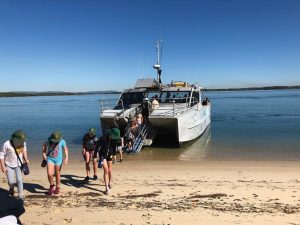 For our day trip to South Stradbroke Island, there were 13 homeschooling kids, one parent, two JWEEC staff, and the Educat skipper. We all met at the Horizon Shores Marina in Woongoolba. My parents dropped me off via the Boat Gold Coast catamaran. We met the other homeschoolers up on the shore next to the cafe. The marina was busy with boats. The Educat skipper and the JWEEC staff all have extensive experience conducting these trips with kids.
For our day trip to South Stradbroke Island, there were 13 homeschooling kids, one parent, two JWEEC staff, and the Educat skipper. We all met at the Horizon Shores Marina in Woongoolba. My parents dropped me off via the Boat Gold Coast catamaran. We met the other homeschoolers up on the shore next to the cafe. The marina was busy with boats. The Educat skipper and the JWEEC staff all have extensive experience conducting these trips with kids.
The Educat is a catamaran with an open drawbridge at the front. Inside, there is a research table and four rows of chairs. They use the Educat for research purposes sometimes.
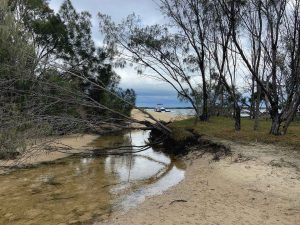 On the boat, all the kids were chatting along with each other. Most of the homeschoolers were from Brisbane. Everyone was excited, including me. It took about an hour to get to the island. On the way there, the JWEEC team conducted a safety briefing and other information.
On the boat, all the kids were chatting along with each other. Most of the homeschoolers were from Brisbane. Everyone was excited, including me. It took about an hour to get to the island. On the way there, the JWEEC team conducted a safety briefing and other information.
Stradbroke Island is a cultural piece of land for the Aboriginal people. This island was called either the island of the sun or the island of mosquitoes. (Note: Before South Stradbroke separated from the bigger island that is now known as North Stradbroke Island, there was only one island called Minjerribah, the 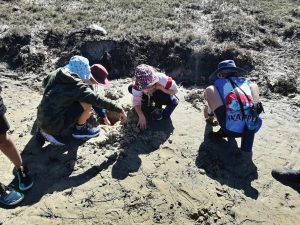 name currently referring to the bigger North Stradbroke.)
name currently referring to the bigger North Stradbroke.)
As you know, food is a valuable resource to support life. Food would be hard to find on a remote island; however this island is not that remote. In fact, there are loads of fish surrounding the island.
There is what can be considered a rare wallaby, the golden wallaby, also known as “stinker” (I do not know why it is called that.) on the island. We need to know the difference between normal ones and the golden wallabies. An easy way to know the difference would be to know facts about these two types of wallabies: a normal wallaby is smaller 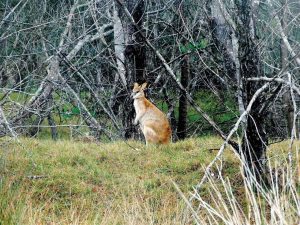 than a kangaroo. Golden wallabies are, by the name, golden. (According to the information on the Queensland Museum website: “Isolation on Stradbroke Island has favoured the establishment of a golden colour phase, which is particularly frequent on South Stradbroke and now sporadically recorded from the northern Gold Coast to the Nerang National Park. No other local wallaby is as dark on the back or as ginger on the belly, or has a white-tipped tail; no similar species.”)
than a kangaroo. Golden wallabies are, by the name, golden. (According to the information on the Queensland Museum website: “Isolation on Stradbroke Island has favoured the establishment of a golden colour phase, which is particularly frequent on South Stradbroke and now sporadically recorded from the northern Gold Coast to the Nerang National Park. No other local wallaby is as dark on the back or as ginger on the belly, or has a white-tipped tail; no similar species.”)
Water is another one that is a necessity for life, actually even more important than food. You may think 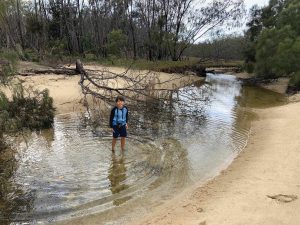 that water is easy to get. Nope. Water needs to be purified to be able to drink it. There are, however, oases that have fresh water.
that water is easy to get. Nope. Water needs to be purified to be able to drink it. There are, however, oases that have fresh water.
Shelter, now this one is easy (relatively easy). The easiest way would just be to sit under a tree. You can get some fallen trees and make a tipi.
There are loads of trees on the island. Protection of trees is an important matter. On the island are different trees and leaves. And as you know, trees convert carbon dioxide into oxygen; therefore vital to people. 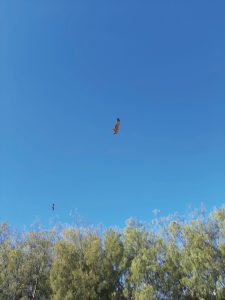 Trees have been cut down, even though it is illegal. They use the wood for fire. I saw a big area with trees cut down. It’s hard to catch the people who cut them down, because of the island having no police patrols.
Trees have been cut down, even though it is illegal. They use the wood for fire. I saw a big area with trees cut down. It’s hard to catch the people who cut them down, because of the island having no police patrols.
I saw a creek that sometimes has no water in it. It can fill up, but only on very high tide. The creek is home to a lot of fossils from poo (yes, poo) to bones. There is a rare and nearly extinct wallaby, the golden wallaby otherwise known as stinker (weird name) on the island. As they are nearly extinct you can only find them on Stradbroke Island.
If you fish the Aboriginal people’s way, it is quite easy and will get you a lot of fish. You can get about 10 fish each time. The way you do it is by getting a net (aboriginal nets are made of leaves and bark woven together), and then separate into groups. One group goes down to the end of the river, or if in a long or wide river, get them as far as you need. About three people need to 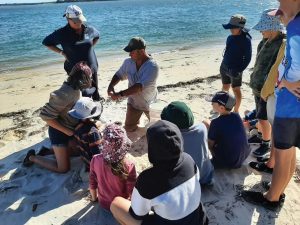 be holding the net in a semi-circle formation that is open at the straight end; have the group in the water. You get the other group to wait on the beach ready to pull the net onto the shore. The first group then slaps the water. For Aboriginals, this was to get the dolphins to come and push fish to the shore. (Read the dreaming story*.) When the dolphins get close to the shore, they should start slapping the water again and move towards the net. When the first group gets close, the group holding the net will close up the net trapping the fish; then you pull the net to the shore. When on the shore get a third group to take the fish from the net.
be holding the net in a semi-circle formation that is open at the straight end; have the group in the water. You get the other group to wait on the beach ready to pull the net onto the shore. The first group then slaps the water. For Aboriginals, this was to get the dolphins to come and push fish to the shore. (Read the dreaming story*.) When the dolphins get close to the shore, they should start slapping the water again and move towards the net. When the first group gets close, the group holding the net will close up the net trapping the fish; then you pull the net to the shore. When on the shore get a third group to take the fish from the net.
This island is amazing and it’s interesting to know what this island means to Aboriginal culture and their people.
I thought this island was just a plain old island. But when we got there and explored the forest, I realised that it is much more than that; it is a place of rare experiences, a place of trees that pillar over the ground, and a place of importance.
Probably the best part of the trip was seeing the drawbridge of the boat come down. We tried to make a fire on the island, but we just got faint smoke. We were told that apparently someone made a fire using two sticks, in 6.4 seconds. For a comparison, it will take you more than 1,200 seconds to eat dinner. 1200 – 6.4 equals 1193.6 seconds. But this is not a math lesson.
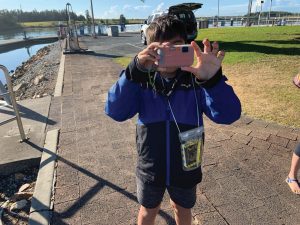 On the way back it was just like going to the island. Kids were talking like crazy! This trip was interesting. The whole experience was a great journey. And to top it all off, when we got back to the marina, I was starving!
On the way back it was just like going to the island. Kids were talking like crazy! This trip was interesting. The whole experience was a great journey. And to top it all off, when we got back to the marina, I was starving!
It is my first time writing a story for a magazine, so this is all new to me. The camera and notebook I took with me were very helpful. The photos and my notes really helped shape this story.
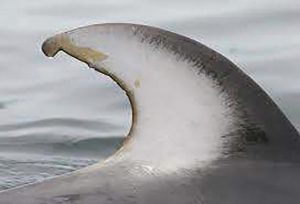 *The story of Gowonda is a Aboriginal dreaming story. Gowonda was an elder; when he died, they believed that Gowonda’s spirit animal was a dolphin. They did so because, after his death, a white-tailed dolphin showed up; Gowonda had white hair and white beard so it made sense that it was him. He led the dolphins to push the fish from the river or ocean towards their nets. As a reward, the Aboriginal people gave the dolphins some of their fish. Any time the fisherman hit the water, the dolphins would come, and with them all the fish. It is an interesting story, and if you walked up to someone they would most likely not know the story. – Aram Kancachian
*The story of Gowonda is a Aboriginal dreaming story. Gowonda was an elder; when he died, they believed that Gowonda’s spirit animal was a dolphin. They did so because, after his death, a white-tailed dolphin showed up; Gowonda had white hair and white beard so it made sense that it was him. He led the dolphins to push the fish from the river or ocean towards their nets. As a reward, the Aboriginal people gave the dolphins some of their fish. Any time the fisherman hit the water, the dolphins would come, and with them all the fish. It is an interesting story, and if you walked up to someone they would most likely not know the story. – Aram Kancachian
Published in print October-December 2021






















